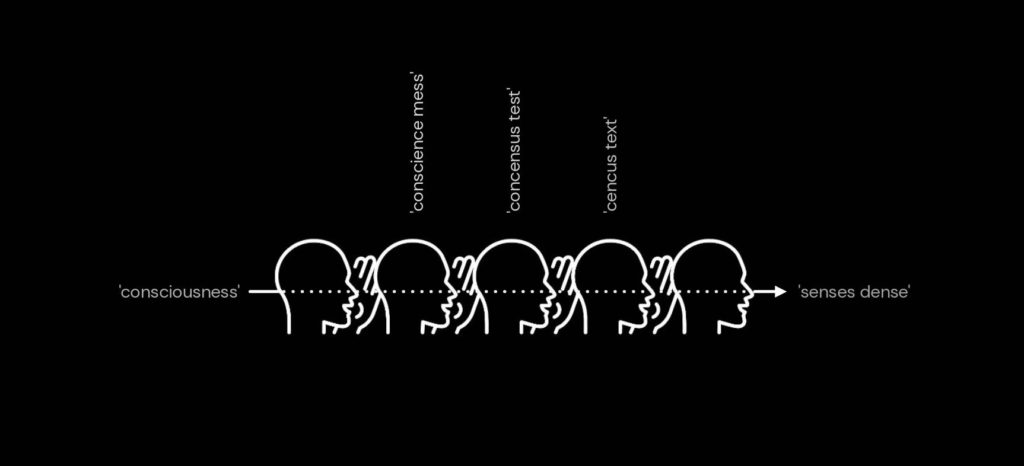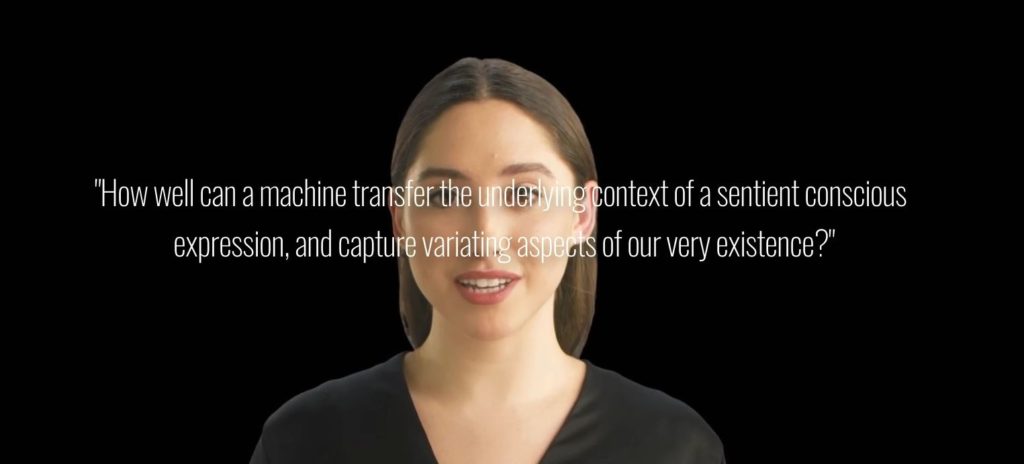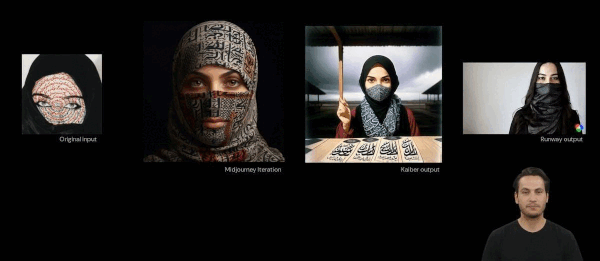Consciousness Information Shift, Through an AI Chain
This concept of sequences explores the intersection of consciousness, artificial intelligence, and the transformation and communication of artistic expressions. Drawing inspiration from the children’s game “broken telephone,” this investigation involves a sequence of artificial intelligence algorithms attempting to interpret and translate various forms of artistic media, thereby assessing the fidelity of the message transformation across this sequence.

The study of artificial intelligence’s prowess in understanding human consciousness, as represented through various artistic mediums, offers intriguing insights. An intricate game reminiscent of “broken telephone” is set in motion. However, in this digital era, children in a row are replaced by artificial intelligence algorithms. As the message travels across this AI chain, it undergoes a metamorphosis, raising the pertinent question: Can a machine accurately transfer the context of sentient conscious expressions?

The process is a linear sequence of artificial intelligence platforms is deployed, commencing with an original artistic image as the initial input. It is then the responsibility of mid-journey, the initial AI, to interpret this image and generate a corresponding textual description. This text re-enters mid-journey, providing the basis for a new image. Subsequent stages involve further text-image transformations by ASA dot I, Caber, and Runway, culminating in the generation of a video from the final text. The entire process hence involves multiple transformations of the initial message, demonstrating the potential to form a continuous feedback loop.

Context-wise, the explorative journey begins with a varied selection of artworks, including Antony Gormley’s “Another Place,” Diller Scofidio + Renfro’s “Blur Building,” Andrei Tarkovsky’s “Stalker,” Shirin Neshat’s “Women of Allah,” and Ferdinand Hodler’s “The Night.” These pieces embrace diverse facets of human consciousness, providing rich input context for the AI platforms.

To gauge the degree of transformation the message undergoes, a quantitative measure, pixel loss, is employed. This measure illustrates the pixel difference between the original artwork and the final AI-generated video, bringing a numerical perspective to this qualitative exploration.
Individual Examinations:
- Individualism/Sculpture: The AI remarkably captured the essence of individualism in “Another Place,” replicating bodies gazing out to sea and demonstrating visual continuity. However, color drifts in the generated images suggest a minor conceptual loss.
- Perception/Architecture: “Blur Building” presents a challenging context, with its nondeterministic nature leading to significant deviations. Despite this, the AI interpretations somewhat captured the enigmatic fog of the original building.
- Subconscious/Cinematography: Tarkovsky’s “Stalker” was notably preserved across transformation steps. Despite the dissipation of dramatic tones integral to the original cinematography, the conceptual expression of the individual and its timeline were successfully transmitted.
- Religion/Photography: The AI effectively aligned with the positioning of subjects in “Women of Allah” series and demonstrated remarkable precision in detail identification. Notably, the color palettes of the original and transformed images matched near perfectly.
- Dreams/Painting: Ferdinand Hodler’s “The Night” was faithfully echoed in the AI-generated images, which remained true to the original artwork’s color scheme and dramatic tones.

Conclusion: Upon quantifying pixel loss across each step in each category, varying levels of direct loss were identified. Individualism/Sculpture experienced a direct loss of 42.78%, Perception/Architecture saw 27.36%, Subconscious/Cinematography reported 28.88%, Religion/Photography displayed the highest loss at 40.64%, and Dreams/Painting demonstrated the lowest loss at 21.4%. These figures highlight the varied success rates.


